Q-switched Lasers
Posted on 2006-09-16 as part of the Photonics Spotlight (available as e-mail newsletter!)
Permanent link: https://www.rp-photonics.com/spotlight_2006_09_16.html
Author: Dr. Rüdiger Paschotta, RP Photonics AG, RP Photonics AG
Abstract: This article explains the differences between the laser crystal materials Nd:YAG and Nd:YVO4 in the context of Q-switched lasers. Nd:YAG is most suitable for high pulse energies at low repetition rates, while Nd:YVO4 allows for the highest repetition rates and shortest pulses. The upper-state lifetime turns out to be of lower importance than is frequently believed.

Ref.: encyclopedia articles on Q switching, Q-switched lasers, saturation energy, upper-state lifetime, YAG lasers, vanadate lasers; G. J. Spühler et al., JOSA B 16 (3), 376 (1999)
Nd:YAG and Nd:YVO4 (neodymium-doped yttrium vanadate) are belonging to the most popular laser gain media. While their properties for continuous-wave operation are overall quite similar, these media are rather different for use in Q-switched lasers (and by the way, also for mode locking, even though for entirely different reasons). As a rule of thumb, Nd:YAG is more suitable for high pulse energies, while Nd:YVO4 is better for high pulse repetition rates.
But why exactly is this true? Many believe that the shorter upper-state lifetime of Nd:YVO4 is the reason, but this is less than half of the truth. A shorter upper-state lifetime limits the energy storage and thus the achievable pulse energies. However, the high gain of Nd:YVO4 can also be a limiting factor: for high pulse energies, it increases the demands on the Q-switch in terms of switching speed and hold-off loss.
Concerning high pulse repetition rates, the upper-state lifetime is actually not very important. It determines the rate of spontaneous emission, which is anyway weak in this regime. The factor of crucial importance is the high emission cross-section of Nd:YVO4, which results in a low saturation fluence and (for a given mode area) in a low saturation energy. The latter enables to achieve a reasonably short pulse duration even for moderate pulse energies, as are possible at high repetition rates. The problem of Nd:YAG at high repetition rates turns out to be that the pulses get too long, or some pulses are left out due to too small gain. All this has nothing to do with the upper-state lifetime.
There are actually more differences between the materials. The very short pump absorption length of Nd:YVO4 allows one to construct Q-switched microchip lasers with very short cavity length, so that pulse durations far below 1 ns can be achieved. The record in this respect is 37 ps, see the reference above (Spühler et al.). In general, Nd:YVO4 will allow for shorter pulses than Nd:YAG for any given repetition rate.
Suppliers
The RP Photonics Buyer's Guide contains 97 suppliers for Q-switched lasers. Among them:

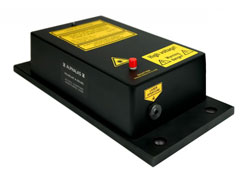
ALPHALAS
ALPHALAS offers actively and passively Q-switched DPSS lasers (IR, VIS & UV) with pulse durations < 1 ns, suitable for applications requiring high peak power and precise synchronization. Both types of lasers feature TEM00 beam profile and compact design.
Passively Q-switched microchip lasers are mechanically extremely stable with very high pulse-to-pulse stability, pulse energies up to 1.5 mJ and > 2 MW peak power and pulse duration down to 500 ps.
The actively Q-switched lasers feature jitter < 500 ps with an option down to 200 ps. Repetition rates from single shot up to 100 kHz and average power up to 5 W are available.
Higher energies and powers can be reached using MOPA configurations.
Applications: micromachining, marking & cutting (e.g. diamonds), nonlinear optics, supercontinuum generation, time-resolved fluorescence measurements, DNA-analysis, pollution monitoring, LIBS, ignition of combustion engines.


GWU-Lasertechnik
GWU-Lasertechnik has more than 30 years of experience in lasers and nonlinear optics. We are the pioneer of commercial BBO OPO technology. Our widely tunable pulsed laser sources cover the spectral range from the deep-UV at <190 nm to the IR at >2700 nm continuously. The scanSeries nanosecond product line offers scalable pulse energy at various repetition rates. As a unique feature, GWU can provide high-speed wavelength scanning across the complete wavelength range with shot-to-shot dynamic. Our all-solid-state laser design ensures maximum reliability for diode-pumped and flash-lamp pumped Q-switched lasers.


AdValue Photonics
AdValue Photonics offers different kinds of Q-switched nanosecond lasers, all emitting in the 2-μm spectral region (1950 nm):
- The Q-switched laser module AP-QS1-MOD generates pulses with 20 ns to 200 ns duration, up to 30 kHz repetition rate, up to 10 W average output power and high beam quality. The module also has an output modulation capability.
- The Q-switched laser AP-QS is a compact seed laser delivering 5-μJ pulses with up to 30 kHz repetition rate.
- The Q-switched laser AP-QS1 with a rack housing offers up to 5 W average power and 250 μJ pulse energy.


RPMC Lasers
Serving North America, RPMC Lasers offers a wide range of Q-switched laser sources, with wavelengths from the UV through the IR. These offerings include DPSS lasers, fiber lasers, tunable OPO/DPSS lasers, MIL-spec lasers, and micro lasers/microchip lasers with both active and passive Q-switches, available with up to 100 W average output power, up to 200 mJ pulse energy, pulse widths as low as 100 fs and up to 125 ns, and many repetition rate options up to 80 MHz. With many standard configurations, various options and add-ons, and full customization capabilities, we're sure to have the right fit. Let RPMC help you find the right laser today!

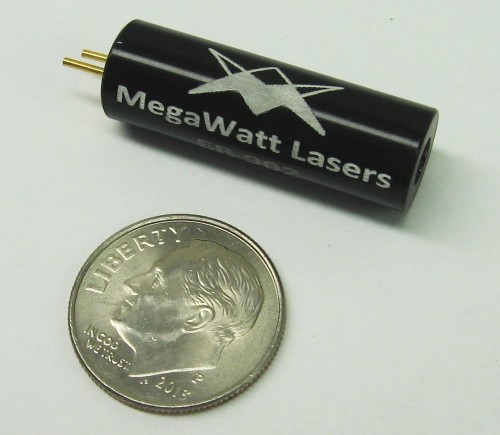
Megawatt Lasers
MegaWatt Lasers's ER902 is a passively Q-switched erbium glass laser that operates at 1.54 μmm. This eye-safe wavelength is ideal for defense, LIBS, and LIDAR applications. The design allows for 10 Hz repetition rates with a 4 ns pulse width and a 200 μJ pulse energy. All in a 9 mm diameter by 20 mm length package.


Bright Solutions
Bright Solutions offers various Q-switched lasers:
- Wedge – nanosecond Q-switched lasers for 266, 355, 532, 1064, 1570, 3100 nm (also multi-wavelength configurations), used e.g. for atmospheric LIDAR, monitoring, glass machining or lithography
- Onda – compact monolithic nanosecond Q-switched lasers for 266, 355, 532 or 1064 nm, used e.g. for lens marking, plastic marking or intravolume glass marking
- Sol – compact Q-switched lasers for 355, 532 or 1064 nm, up to 200 kHz, used e.g. for automotive fabrication, electronic machining, ID card writing and other industrial applications
- Vento – sub-nanosecond MOPA lasers with pulse durations down to 500 ps, up to 200 kHz, up to 100 W average power at 1064 nm or 50 W at 532 nm, e.g. for LIDAR or PCB microprocessing
- Aero – high energy lasers with up to 200 mJ at 1064 nm, 100 mJ at 532 nm, multi-wavelength configurations, custom beam shaping, application e.g. in atmospheric LIDAR, LIBS or nonlinear spectroscopy
- ONE DPSS – miniaturized Q-switched lasers with up to 200 μJ and down to 3 ns, e.g. for atmospheric LIDAR and laser marking on plastics

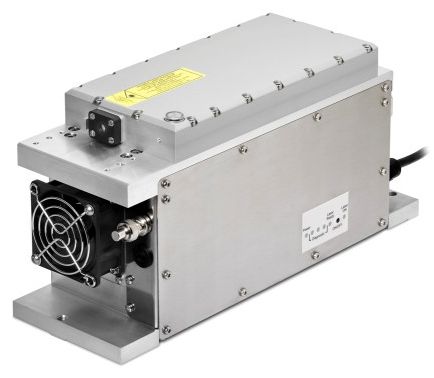
Teem Photonics
Teem Photonics offers passively Q-switched lasers – Microchip lasers and more powerful devices from the Powerchip laser series. Some are free running, while others are triggerable up to 100 kHz. All can generate sub-nanosecond pulses. Available emission wavelengths are 1535 nm, 1064 nm, 532 nm, 355 nm, 266 nm and 213 nm.


Lumibird
Lumibird nanosecond Q-switched Nd:YAG lasers are well known for their ruggedness and versatility. From 5 mJ to 2.3 J at 1064 nm, from single pulse to 400 Hz, they can be diode-pumped (compactness, ease of use) or flashlamp-pumped (high energy), and are available at 532 nm, 355 nm, 266 nm and 1.5 µm. Double pulse models are also proposed for applications in fluid mechanics (PIV).


EKSPLA
Short pulse duration, a wide range of customization options and high stability are distinctive feature of EKSPLA nanosecond Q-switched lasers. Employing latest achievements in laser technologies, our team of dedicated engineers designed wide range of products tailored for specific applications: from compact, simple and robust EKSPLA nanosecond Q-switched DPSS NL230 series lasers for OEM manufacturers to high energy customized flash-lamp multijoule systems for research laboratories.
Second (532 nm), third (355 nm), fourth (266 nm) and fifth (213 nm) (where available) harmonic options combined with various accessories and customization possibilities make these lasers well suited for many OEM and laboratory applications like OPO, OPCPA, Ti:sapphire and dye laser pumping, spectroscopy, remote sensing and plasma research.

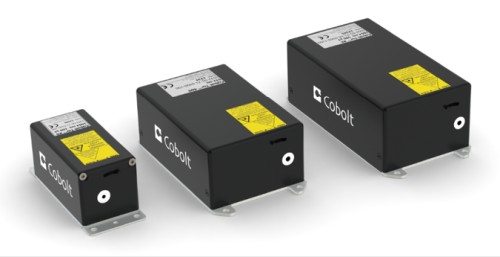
HÜBNER Photonics
HÜBNER Photonics offer pulsed nanosecond lasers in the Cobolt Tor Series: generating up to 0.5 mJ pulse energy, <5 ns pulse width, 7 kHz PRF. Single pulse triggerable and free running models are available.
This article is a posting of the Photonics Spotlight, authored by Dr. Rüdiger Paschotta. You may link to this page and cite it, because its location is permanent. See also the RP Photonics Encyclopedia.
Note that you can also receive the articles in the form of a newsletter or with an RSS feed.
Questions and Comments from Users
Here you can submit questions and comments. As far as they get accepted by the author, they will appear above this paragraph together with the author’s answer. The author will decide on acceptance based on certain criteria. Essentially, the issue must be of sufficiently broad interest.
Please do not enter personal data here; we would otherwise delete it soon. (See also our privacy declaration.) If you wish to receive personal feedback or consultancy from the author, please contact him, e.g. via e-mail.
By submitting the information, you give your consent to the potential publication of your inputs on our website according to our rules. (If you later retract your consent, we will delete those inputs.) As your inputs are first reviewed by the author, they may be published with some delay.

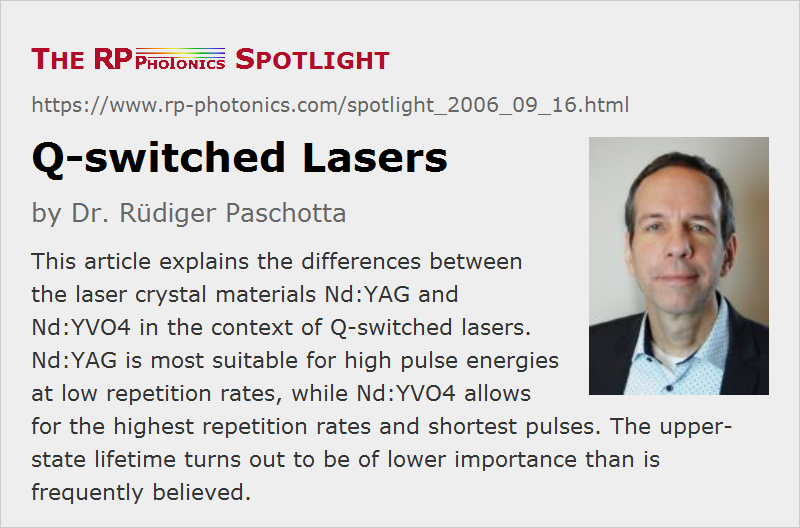
Share this with your friends and colleagues, e.g. via social media:
These sharing buttons are implemented in a privacy-friendly way!